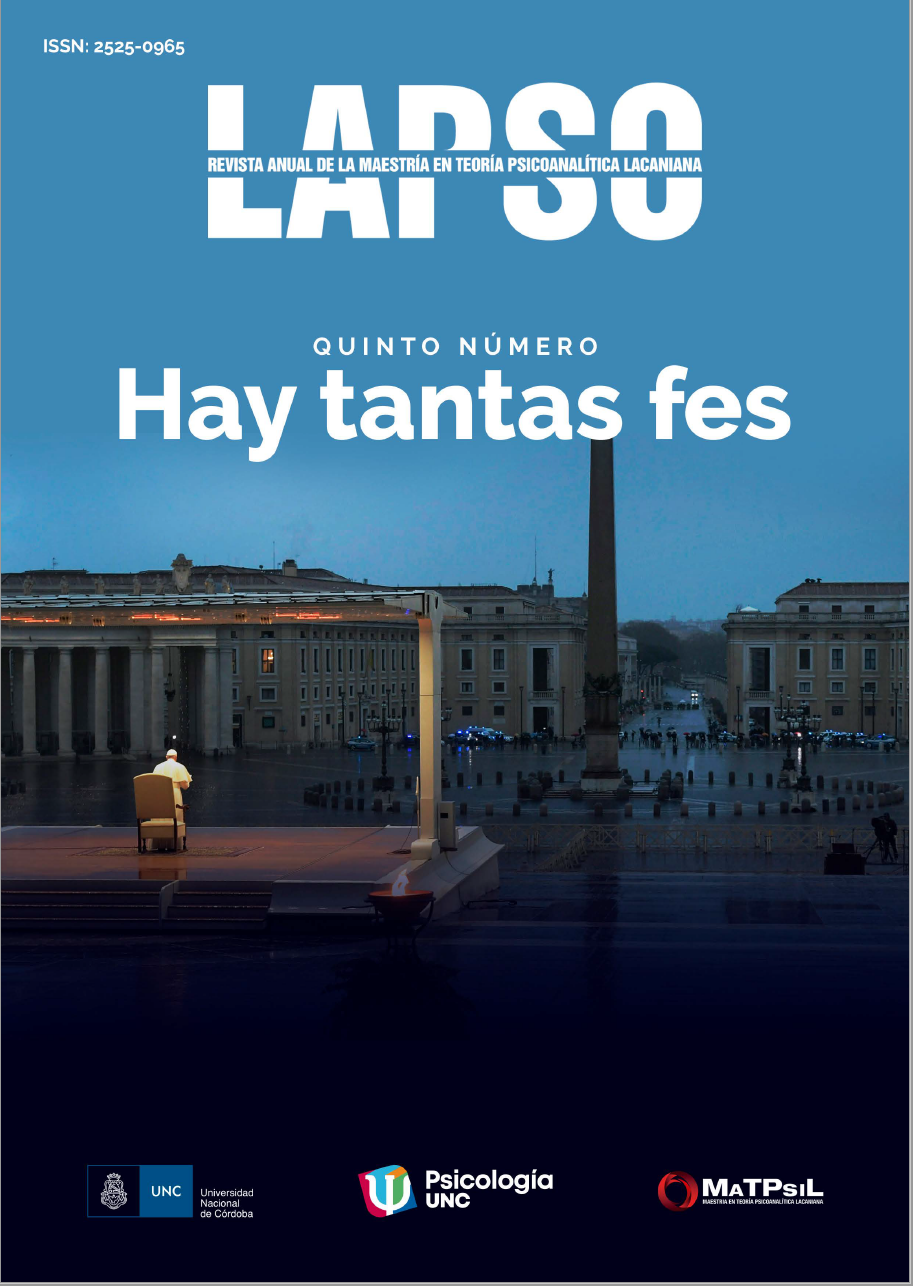Could a robot be subject?
Keywords:
letter, number, robot, S1, traversing the fantasyAbstract
What differentiates a parlêtre from a robot? Can we make a robot from a human? Is the biology of the flesh finally the barrier between an android and a human being? Can be a subject there? And if so, is it possible to hypothesize a fantasy and locate its traversing?
In the present text, we will articulate the concept of fantasy in neurosis and its traversing towards the direction of a cure, considering it from a fictional character, a robot.
The consequences of the implantation of a mark, made on each robot with the intention of a better imitation of humanity will also be explored, appearing in the series as the center of the maze. A homology between this mark and S1 will be proposed as a mark of jouissance and its accomplishment will reintroduce what is intended as a foreclosure, science at the service of manipulation for mercantilism purposes: the jouissance at stake.
Downloads
References
Alvarez Bayón, P. y otros (2017). “Fantasmas, ficciones, mutaciones. El psicoanálisis y sus relaciones con la realidad”. Argumento Jornadas anuales de la EOL. Disponible en: http://www.eol.org.ar/template.asp?Sec=jornadas&SubSec=jornadas_eol&File=jornadas_eol.html
Arenas, G. (2014). Los 11 Unos del 19 más uno. Buenos Aires: Grama.
Bassols, M. (10 de febrero de 2014) “Fantasma y real en la Clínica Lacaniana”. En Desescrits de psicoanàlisi lacaniana. Disponible en: http://miquelbassols.blogspot.com/2014/02/fantasma-y-real-en-la-clinica-lacaniana.html?m=1
Focchi, M. (Noviembre 2012). “El número en la ciencia y en el psicoanálisis” en Virtualia. Revista Digital de la Escuela de la Orientación Lacaniana. Año 11, Nº 25. Disponible en: http://www.revistavirtualia.com/articulos/261/lo-real-en-la-ciencia-y-el-psicoanalisis/el-numero-en-la-ciencia-y-en-el-psicoanalisis
Lacan, J. (1945 [2007]). “El tiempo lógico y el aserto de certidumbre anticipada. Un nuevo sofisma” en Escritos 1. Buenos Aires: Siglo veintiuno editores.
Lacan, J. (1953 [2012]). “Función y campo de la palabra y del lenguaje en psicoanálisis” en Escritos 1. Buenos Aires: Siglo veintiuno editores.
Lacan, J. (1958-1959 [2014]). “El deseo y su interpretación” en El Seminario de Jacques Lacan. Libro 6. Buenos Aires: Paidós.
Lacan, J. (1962-1963 [2007]). “La angustia” en El Seminario de Jacques Lacan. Libro 10. Buenos Aires: Paidós.
Lacan, J. (1964 [2010]). “Los cuatro conceptos fundamentales en psicoanálisis” en El seminario de Jacques Lacan. Libro 11. Buenos Aires: Paidós.
Lacan, J. (30 de marzo de 1966). “El objeto del psicoanálisis”: Inédito.
Lacan, J. (1966-1967 [2016]). “La lógica del fantasma. Reseña del Seminario de 1966-67” en Otros escritos. Buenos Aires: Paidós.
Lacan, J. (1971-1972 [2016]). “…o peor” El Seminario de Jacques Lacan. Buenos Aires: Paidós.
Lacan, J. (1972-1973 [2010]). “Aún” en El seminario de Jacques Lacan. Libro 20. Buenos Aires: Paidós.
Lacan, J. (1974 [2005]). El triunfo de la religión. Buenos Aires: Paidós.
Lacan, J. (1975-1976 [2012]). “El sinthome” en el seminario de Jacques Lacan. Libro 23. Buenos Aires: Paidós.
Miller, J-A (2010) “Despertar” en Matemas I. Buenos Aires: Manantial.
Miller, J-A. (23 de marzo de 2011). “El ser y el Uno”. París: inédito.
Downloads
Published
How to Cite
Issue
Section
License

This work is licensed under a Creative Commons Attribution-NonCommercial 4.0 International License.
Se permite la generación de obras derivadas siempre que no se haga con fines comerciales. Tampoco se puede utilizar la obra original con fines comerciales.


